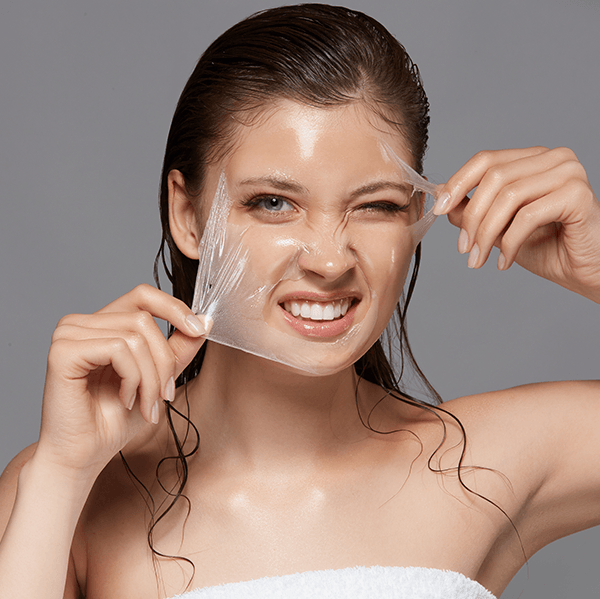Chemical Peeling

Chemical Peeling
It is an extremely safe method used by experienced hands to improve the appearance of the skin, reduce the rate of hyperpigmentation, ensure color homogeneity, and improve light wrinkles. Extremely satisfactory results are obtained with correct and appropriate use in acne and melasma, which are dermatological problems. Chemical peeling has three versions as “superficial, medium and deep peeling” according to the scope of the procedure. Superficial and medium peelings are preferred since they provide a fresher appearance on the skin, and do not adversely affect the quality of life of the person after the procedure. Deep peelings are not preferred due to the difficulty of performing the procedure under sedation, and the results obtained are less satisfactory than expected compared to the restrictions in the patient's life. The substances used for treatment in chemical peeling are also included in shelf products at lesser amounts. It is an innocent form of treatment if the measures explained to the patient are followed, and it is performed by an experienced specialist physician. In our clinic, fruit acid peeling and TCA peeling for antiaging, salicylic acid peeling for acne treatment and Jessner peeling for spots such as pregnancy spots and sunspots are performed by our dermatologist.
The purpose of superficial peeling is to accelerate the process of ensuring that the young cells from below reach the skin surface by removing the existing cells on the skin surface. This process ensures a softer and homogeneous skin, purifies the skin from blackheads, and eliminates the negative effects such as excessive shine and dryness on the skin by establishing the fat-moisture balance. Glycolic acid obtained from sugar cane, lactic acid obtained from milk, salicylic acid and the main ingredient of aspirin are the most commonly used forms. It is performed in a total of 4-6 sessions, usually once a week or once every two weeks, depending on the patient and the purpose of use. In addition, it is performed in the form of cures of a few sessions a year, depending on the need and age. The strength of the peeling agent can be increased according to the cause to be treated and the tolerability of the patient.
Chemical peeling is a process that must be performed in the winter period and under protection. During the procedure, slight itching and prickling are normal in superficial peelings, while a more pronounced but tolerable pain occurs in moderate peelings compared to superficial peelings. When the procedure is completed, this feeling does not last long; it is temporary. This situation, in which the pain threshold of the patient is also important, is more evident in women before their menstrual periods, and in general in patients with insomnia and restlessness. After the procedure, regular sunscreen should be used (with at least SPF 15 at 2-hour intervals). Since the skin will be sensitive and open to irritation after the procedure, it is necessary to stay away from environments such as bathing with hot water that increases body temperature, exercises that cause sweating, and bath-sauna for a while. Again, sensitive skin should not be irritated by hand as much as possible, and it is important that female patients do not apply make-up immediately after the procedure, preferably for a few days.
In superficial peelings, a slight redness that lasts for a few hours immediately after the procedure and a slight peeling and dandruff may be experienced in the following days, while there may be no redness and dandruff in the types of skin with high resistance. Since moderate peelings affect the deeper layers compared to the superficial peeling, redness and peeling will be more pronounced and long-lasting. It is extremely important not to peel off the crusts by hand if they have occurred, in order not to leave any traces when the treatment process is completed. If procedures such as filling and botox are to be performed as an additional procedure, an interval of 1 week for superficial peeling and 2 weeks for moderate peeling should be allowed between peeling and these procedures. Again, facial laser treatment should be performed 10 days after superficial peeling, and 3 weeks after medium peeling.
Conditions in which chemical peeling should not be performed:
– Severe sunburns
– Known allergies
– Open wounds
– Very recent facial treatment
– Capillaries near the surface of the rosaceiform skin
– Active herpes infection
– Pregnancy
- The use of drugs such as retinoic acid, salicylic acid that cause skin sensitization